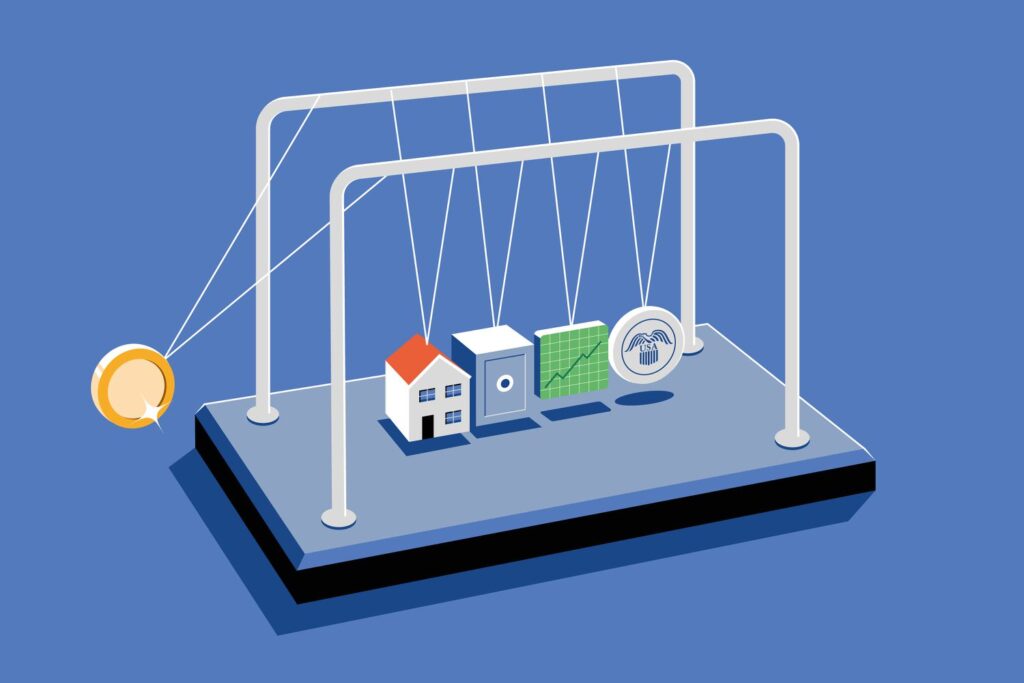1. The Inflation Reality Today
Inflation remains above the Fed’s 2% target, and consumers expect continued price pressure throughout 2025. Tariff-driven inflation is expected to push core PCE inflation to 3.4%–4.3% by late 2025, especially in food, rent, medical care, and education costs.([turn0news18]) Meanwhile, the New York Fed reports consumer expectations at 3% for next year, with housing and grocery costs rising sharply.([turn0news19])
Many Americans feel their wages haven’t kept pace. A Northwestern Mutual study finds 65% cite inflation as their top financial concern, and 51% believe inflation will rise in 2025, while only about 11% say their income is growing faster than prices.([turn0search13])
2. Why Budgets Matter More Than Ever
When basics like groceries, rent, or prescriptions take more of your paycheck, every dollar counts. According to the Cleveland Fed, financial strain is most acute among low- and moderate-income (LMI) households, many of whom rely on credit—a costly buffer in high-interest rate environments.([turn0search5])
But even middle-income families feel the impact: spending growth is flattening, savings remain modest, and wage growth lags inflation.([turn0search10]) Smart budgeting helps households stretch their income further—and avoid debt while building resilience.
3. Foundations of an Effective Budget in 2025
🧾 A. Track and Categorize Spending
Review 30–60 days of transactions in banking or credit accounts. Trace every bill, subscription, or payment to identify areas to cut. Top targets include unused streaming subscriptions, dining out, or repeat services.([turn0news25])
🎯 B. Build a Needs-Wants-Wishes Framework
Label expenses as essentials (rent, food), wants (dining out, entertainment), or wishes (vacations, big splurges). Tackle essentials first, reduce wants, and push wishes only if the budget allows.([turn0news22])
🛑 C. Prioritize High-Interest Debt
Inflation-driven Federal Reserve rate hikes have pushed credit card rates above 24%, making any balance increasing rapidly. Paying off cards and BNPL balances is a top priority. Mortgages with fixed rates may stay reasonable—but other debts bite harder.([turn0search6])
💼 D. Automate Savings Where Possible
Treat saving like a bill. Set aside funds monthly in high-yield savings or money market accounts (currently earning ~4% interest) before spending. Aim to build an emergency fund covering 6 to 12 months of expenses.([turn0news22])
4. Tips for Combating Inflation Through Smart Budget Moves
🍏 Shop Smarter, Eat Better
- Use pantry and bulk cooking, buy sale items, and minimize food waste.
- Explore discount grocery chains or bulk clubs.
- Trim recurrent food and grocery bills through meal planning and bulk stock-ups.([turn0news26])
🏠 Cut Housing Costs Safely
Homecare experts recommend spending no more than 28–30% of gross income on housing. Prioritize debt repayment and emergency savings before stretching budgets for housing. If necessary, consider refinancing, negotiating rent, or seeking more affordable locations.([turn0news22])
💡 Revisit Recurring Bills
Negotiate or shop around for better deals on insurance, utilities, internet, and phones. Often switching providers can save hundreds per year. Use budget apps and tools to reveal these opportunities.([turn0news24])
🧩 Use the “One‑Third Rule”
According to recent research, the One‑Third Rule divides income equally into living expenses, savings, and debt repayment. This balanced framework supports stability under stress.([turn0academia28])
5. Maintain Financial Flexibility
🚫 Avoid Panic Purchases
Inflation fears may tempt people to rush buys, but panic buying during tariff uncertainty or supply disruptions often leads to wasted money. Instead, use your living expenses budget to prioritize needs and only buy ahead for essentials like appliances or electronics when necessary.([turn0news22])
🔄 Review Your Budget Weekly
Spend time each weekend reviewing spending and adjusting. Tracking weekly allows fast corrections—like canceling small charges before they accumulate.
🧠 Match Investments to Your Stage
If you’re young and have years to earn, stay growth-focused with some equities. If retirement is near, shield your assets with safer allocations. Balance risk and preserve flexibility.([turn0news22])
6. Strategies Grouped by Household Types
👨👩👧👦 Families with Children
- Meal plan and bulk cook to curb food inflation.
- Use government programs (SNAP, WIC) if needed—but avoid overreliance.
- Prioritize child-care costs and school costs after covering essentials and emergency savings.
🧑💼 Workers on Fixed Incomes
- Shield budgets by tracking essential spending, automating savings, and reviewing bills.
- Be cautious with medical, housing, or insurance costs that may tie into inflation rises.
💼 Middle-Income Professionals
- Build a buffer covering non-essential spending, short-term goals, and inflation shocks.
- Maximize employer-sponsored retirement matching, and safeguard debt-priority plans—both reduce taxable income and preserve flexibility.
7. What Federal Data Shows
The New York Fed’s June survey indicates consumers are cautiously optimistic: 3% inflation expected over the year, and improved credit access perceptions. But households predict sharp rises in rent, education, and medical costs—fueling overall financial anxiety.([turn0news19])
Deloitte projects consumer spending growth at just 1.4% in 2025, with auto and retail spending shrinking. Elevated borrowing costs and tariff impacts hurt durable good sales—but services remain resilient.([turn0search7])
8. Sector-Specific Budget Steps
| Sector | Budget Strategy |
|---|---|
| Food/Groceries | Bulk shopping, meal prepping, tracking food waste |
| Housing | Limit housing costs to ≤30% income, downsize if needed |
| Auto/Transport | Public transit, carpool, refinance auto loan, delay non-essential vehicle upgrades |
| Utilities/Subscriptions | Cancel unused subscriptions; negotiate rates |
| Medical Expenses | Use preventive care, explore generic prescriptions, track deductibles and coverage limits |
9. Building Long-Term Financial Wellness
- Build your cash reserve first—before investing.
- Automate 10% (or more) of income into savings/investment.
- Track your credit score and debt load monthly.
- Rebalance spending priorities annually—splurge mindfully only when your buffer allows.
10. Why This Matters: Resilience Over Reaction
When costs rise, budgets reveal power. They help:
- Prevent credit card debt that snowballs due to high interest.
- Preserve flexibility through unexpected rate or job shocks.
- Anchor goals (e.g., homeownership, education, retirement) even when living expenses rise.
- Improve mental well-being by reducing money stress.
As MarketWatch columnist Craig Toberman advises, “in turbulence, accumulating cash, not stuff, is a savvier move.”([turn0news22])
✅ Final Thoughts
In the high-cost environment of 2025, smart budgeting is no longer optional—it’s essential. Families can fight inflation by:
- Tracking and categorizing real spending,
- Building emergency savings and paying down high-interest debt,
- Cutting excess costs wisely,
- Automating savings,
- Staying flexible and adjusting budgets weekly or monthly,
- Using frameworks like the One‑Third Rule to balance spending, saving, and debt.





